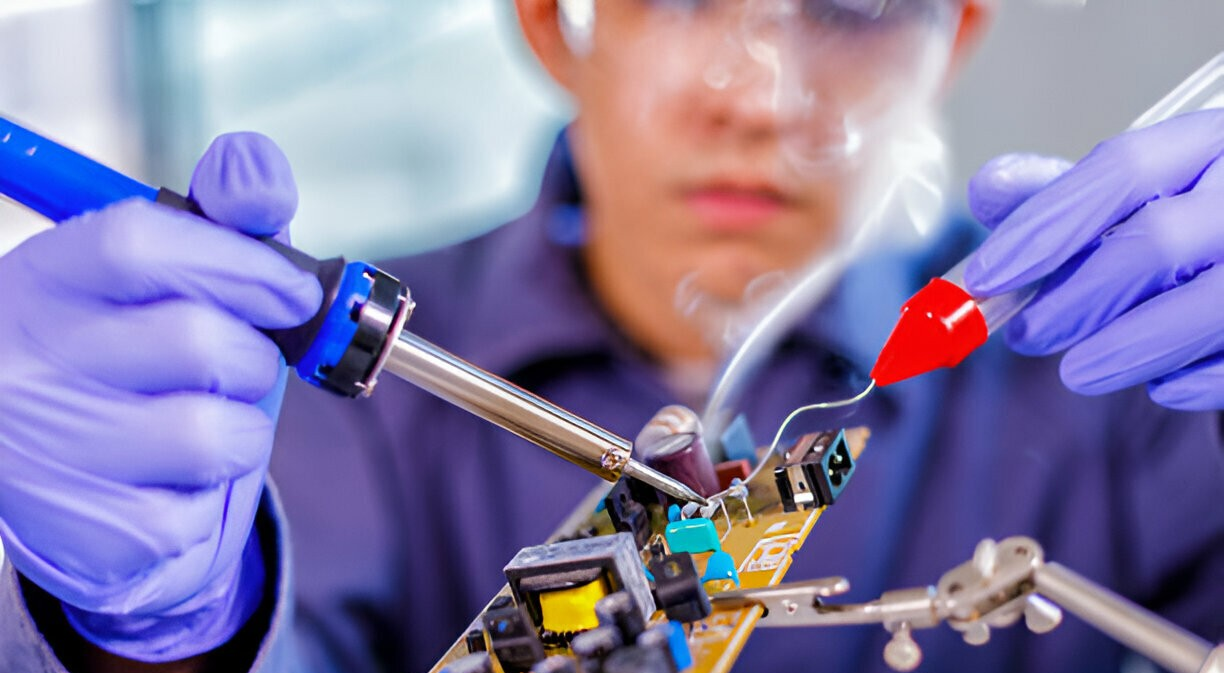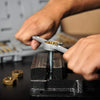
Choosing the Right Soldering Iron: A Buyer's Guide
When it comes to soldering, having the right tools is crucial, and one of the most essential tools for any soldering project is a soldering iron. Whether you are a DIY enthusiast, a hardware shop retailer, or involved in global manufacturing, selecting the right soldering iron is paramount to achieving high-quality solder joints. In this buyer's guide, we will explore the key factors to consider when choosing a soldering iron that suits your specific needs and requirements. We will also delve into the various types of soldering irons available in the market and the importance of soldering accessories for electronics.
Understanding Soldering Irons
A soldering iron is a handheld tool used to heat solder and join two or more electronic components together. It consists of a heated metal tip and a handle, which houses the heating element and temperature control mechanism. Soldering irons are available in different types and sizes, each designed for specific applications. Understanding the various aspects of soldering irons will help you make an informed decision when purchasing one.
Types of Soldering Irons
- Standard Soldering Irons: These are the most common type of soldering irons, widely used for general-purpose soldering tasks. They usually have a fixed wattage and temperature range, making them suitable for a variety of applications.
- Temperature-Controlled Soldering Irons: These soldering irons offer adjustable temperature settings, allowing you to fine-tune the heat output based on the soldering requirements. They are ideal for delicate electronic components that require precise temperature control.
- Butane-Powered Soldering Irons: These portable soldering irons are powered by butane gas and do not require a direct power source. They are convenient for on-the-go soldering or situations where electricity is unavailable.
Factors to Consider When Choosing a Soldering Iron
Now that we have explored the different types of soldering irons, let's dive into the key factors you should consider before making a purchase:
1. Power and Temperature Control
- Wattage: Higher wattage soldering irons heat up faster and recover temperature quickly after soldering. For general electronics work, a soldering iron with a wattage between 20W and 60W is suitable. However, more power may be required for larger soldering tasks or heavy-duty applications.
- Temperature Control: If you work with temperature-sensitive components, consider a soldering iron with adjustable temperature control. This feature allows you to set the desired temperature for precise soldering, reducing the risk of damaging delicate parts.
2. Tip Variety and Compatibility
- Different soldering tasks may require specific tip shapes and sizes. Look for soldering irons that offer a range of tip options or allow for interchangeable tips. Common tip shapes include conical, chisel, and beveled.
- Consider the availability and compatibility of replacement tips for the soldering iron model you choose. Having a variety of tip options will ensure versatility in your soldering projects.
3. Heating Element and Durability
- Ceramic Heating Element: Soldering irons with ceramic heating elements are known for their fast heat-up times and stable temperature control. They are durable and offer consistent performance.
- PTC (Positive Temperature Coefficient) Heating Element: PTC heating elements provide rapid heat-up and excellent temperature stability. They offer energy efficiency and can help save power during soldering.
- Build Quality: Look for soldering irons made from high-quality materials and ensure the handle is comfortable to hold for extended periods. A durable soldering iron will last longer and provide reliable performance.
4. Ease of Use and Safety Features
- Ergonomics: Consider the weight, grip, and overall design of the soldering iron. A comfortable and ergonomic handle will reduce hand fatigue during long soldering sessions.
- Safety Features: Look for features like heat-resistant handles, built-in stands or holders, and auto-shutoff mechanisms. These safety features can prevent accidental burns or damage to your work area.
5. Corded or Cordless
- Corded Soldering Irons: These soldering irons require a power outlet for operation. They provide consistent power and are suitable for extended use.
- Cordless Soldering Irons: Battery-powered soldering irons offer portability and flexibility. They are convenient for on-the-go soldering but may have limitations in terms of heat output and battery life.
Selecting the Right Soldering Accessories
To enhance your soldering experience and achieve professional results, it's essential to invest in the right soldering accessories. Here are a few must-have accessories to consider:
Soldering Iron Stand
- A soldering iron stand provides a safe and secure place to rest your soldering iron when not in use. It helps prevent accidental burns and protects your work surface from heat damage.
Soldering Tips and Nozzles
- Having a variety of soldering tips and nozzles allows for different soldering techniques and precise application of solder. Consider the following options:
- Fine Point Tip: Ideal for intricate soldering tasks that require precision and control.
- Chisel Tip: Suitable for larger soldering joints and surface mount components.
- Conical Tip: Versatile tip shape that can be used for various soldering applications.
- Hot Air Nozzle: Used for surface mount rework and desoldering components.
Soldering Flux
- Soldering flux is a chemical compound that helps improve soldering performance by reducing oxidation and promoting better wetting. It improves the flow of solder and enhances the bond between the solder and the components.
Solder Wick
- Solder wick, also known as desoldering braid, is a braided copper wire used to remove excess solder or to desolder components. It absorbs molten solder, making it easier to remove or rework connections.
Soldering Helping Hands
- Helping hands are a useful accessory that holds your workpiece in place, allowing you to have both hands free for soldering. They usually consist of adjustable alligator clips and a weighted base for stability.
Related Article: Top 10 Must-Have Soldering Tool Accessories
Mastering the Art of Soldering
Choosing the right soldering iron is vital for achieving high-quality solder joints in your electronic projects. Consider factors such as power and temperature control, tip variety and compatibility, heating element and durability, ease of use and safety features, and whether a corded or cordless soldering iron suits your needs. Additionally, investing in soldering accessories like a soldering iron stand, various tips and nozzles, soldering flux, solder wick, and helping hands will enhance your soldering experience and improve the quality of your work.
Remember to maintain your soldering iron properly by cleaning the tip, practicing safe storage and handling, and replacing worn-out tips when necessary. With the right soldering iron and accessories, combined with proper technique and practice, you can master the art of soldering and take your DIY projects or hardware shop retail endeavors to the next level. Happy soldering!
Related Article: A Guide to Soldering Tool Accessories



